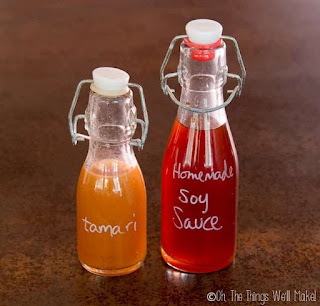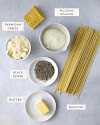 |
| How to make soy sauce |
Soy sauce. Japanese cuisine couldn’t be without it. All we grow up with a lot of dishes seasoned with soy sauce, so it's definitely one of our soul condiments in
One of the most widely used condiments in the world, soy sauce has been used to flavor food for more than 2000 years. Although it is now simple to purchase soy sauce, you might be surprised to learn how it is made.
Soy Sauce is made from the 5 basic ingredients of soy beans, wheat, salt, water and Aspergillus oryzae (a kind of koji mold). Since the components of these ingredients have a direct impact on the flavor of the soy sauce, it is very important to choose the right ones.
Aspergillus oryzae is the essential element in making soy sauce, and plays a very important role in fermenting the materials and then producing the characteristic “color”, “taste”, “aroma”, and “umami”. Unfortunately, there is no alternative to kickstart fermentation for soy sauce.
 |
| How to make soy sauce |
How does soy sauce work?
Soy sauce is an Asian condiment that is typically made from fermented soybeans and is thin and liquidy. The mixture of fermented soybeans is allowed to continue fermenting within a salt brine after specific fungus strains are grown on the soybeans.
Not all contemporary soy sauces are actually fermented anymore, and soy sauce varieties vary from region to region. It's great to be able to make your own soy sauce and add one more unpasteurized fermented food to your pantry because the majority of store-bought soy sauce will also be pasteurized. Additionally, this one can help you save a lot of money if you use a lot of soy sauce!)
Which Shoyu is it?
The type of soy sauce that is made from both soybeans and wheat is known as shoyu in Japanese. When we think of "normal" soy sauce, this is typically what comes to mind.
Shoyu differs from Tamari, a different kind of soy sauce, in that Tamari sometimes ferments with a different type of fungus (Aspergillus tamari) and uses very little to no wheat. Tamari originated as a byproduct of soybean miso production. The liquid that gathered on the miso was the problem. Companies, on the other hand, are working to produce more tamari as a stand-alone product in light of the rising demand for wheat-free soy sauce
.jpeg) |
| How make soy sauce |
INGREDIENTS
Soy Sauce Ingredients Soy sauce only contains soybeans, wheat, salt, water, and the fermenting fungus, typically Aspergillus oryzae or Soja. Tamari can sometimes be made with Aspergillus tamarii.
I went to the health food store and bought the only soybeans that were available there when I tried making soy sauce for the first time. They produced a less appealing paste or sauce and were small, green soybeans.
How to make soy sauce
• When cooked, add the soybeans to a food processor and mix to a glue. Blend the flour with the beans that have been pureed in a bowl.
• Form a log with the bean-flour mixture on a clean surface. Slice the log into slices with a thickness of about 14 inches.
• Place the soy bean slices on a paper towel that has been dampened and cover them with another wet towel. Wrap it in cling wrap and store it somewhere private in your kitchen or home. Allow to rest for seven days, or until mold forms on the discs.
• Arrange the discs on a baking sheet so that they don't touch after unwrapping them. Put them in direct sunlight to dry. When dried, soy bean discs should turn brown. The koji is this.
• Fermentation is the next step in learning how to make soy sauce. Take a pot for this that you won't need soon. Stir the salt and water into the container. Cover with the soybean discs. Dissolving the discs in salt water is the goal of this step, which can take up to six months. Every day, stir the mixture.
• Use cheesecloth to strain the mixture into bottles so it can be stored after the soybean slices have completely dissolved. The soy sauce can now be used. Soy sauce adds flavor to soups, vegetables, seafood, and meats.
Serving of Nutrients:
5g
 |
| How to make soy sauce |
Only four basic ingredients are used to make naturally brewed soy sauce: wheat, soybeans, salt, and water For these straightforward ingredients, careful selection is required. The soybeans are first soaked for a long time in water before being steamed at high temperatures.
What are the five components of soy sauce?
Soy sauce can be made in a number of different ways, but the five main ingredients that are typically used are as follows: wheat, soybeans, water, salt, and yeast
What could I substitute for soy sauce?
• Tequila. Tamari is the closest thing in taste to soy sauce if you don't have a soy allergy or watch your sodium intake.
• Spicy Worcestershire sauce
• Amino acids from coconut
• Amino acids in water.
• Dried mushrooms
• Sauce for fish...
• Paste of miso
• Seasoning for Maggi.






0 Comments